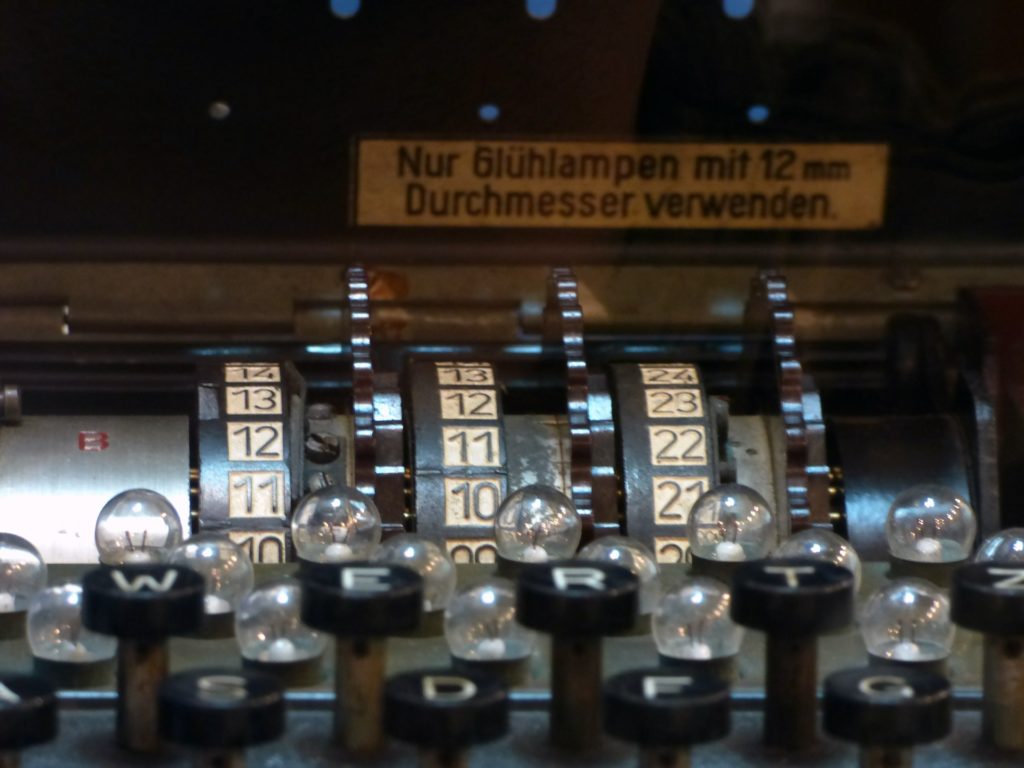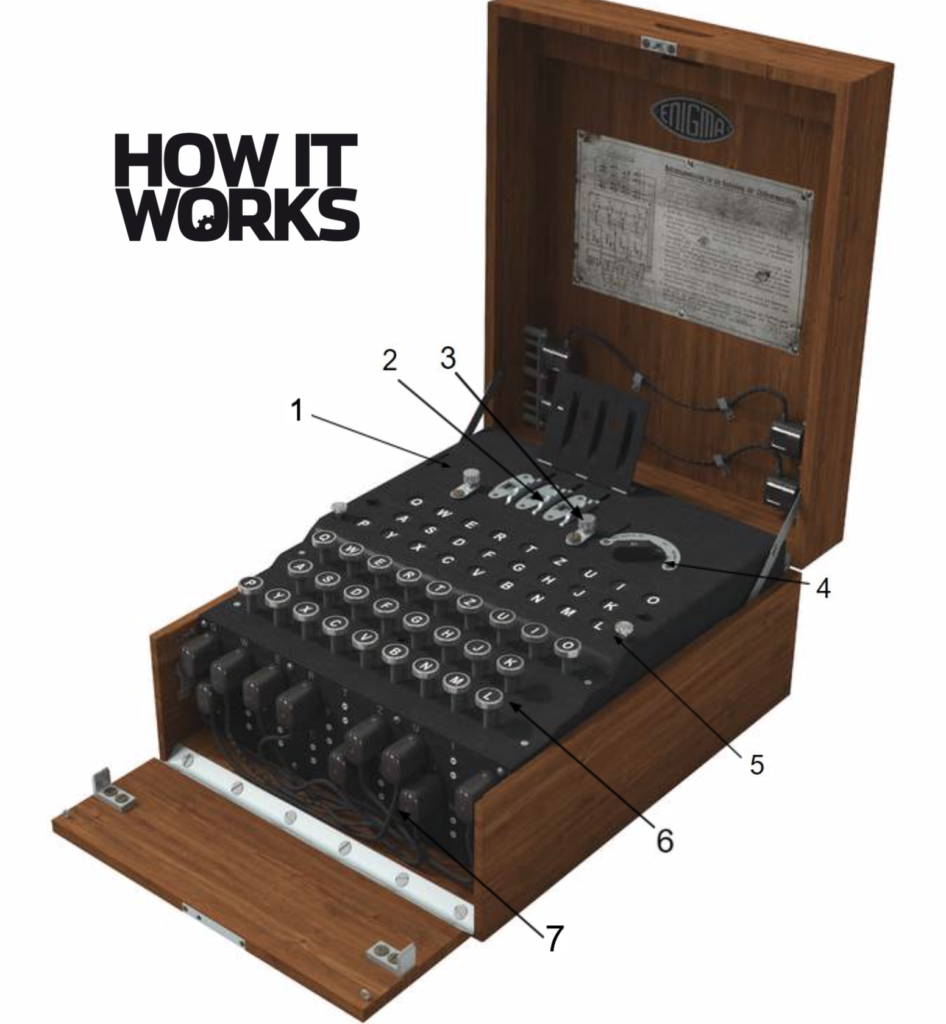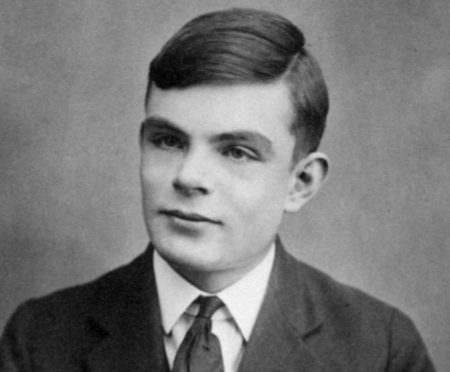Enigma’s secret messages
by Ailsa Harvey · 11/02/2021
How did this machine encrypt confidential wartime communications?

Communicating plans during World War II was no easy feat. How do you share a message between all your troops and allies at a time when your every move is being analysed by the enemy? How do you ensure that the messages will make it into the right hands?
The answer for German forces came in the form of the Enigma machine, and while it was an enigma to the opposition, the system would eventually be cracked. The electromechanical machine worked to replace every letter in the message with an encrypted, seemingly nonsensical substitute. As electrical signals passed through the device, a series of rotors and wires would divert the path to new letters. What earned the Enigma machine its name was the lack of a consistent pattern derived from results. Every day the German military would change the set-up and components of the machine so that they couldn’t easily be deciphered. All this required was the sender and receiver to arrange their machines in the same positions.
When Britain’s brainiest mathematicians finally worked out how to crack the code in 1941, the intricate system was revealed, along with numerous secret messages and the opposition’s war plans. The curious machine that gave Germany an advantage in the early stages of war could now play into the hands of Britain and the Allied forces.
Creating the code
Each letter typed goes through nine encryption phases before emerging from the machine in its final form. Having so many conversions is what made this machine’s mechanism so difficult to crack. The rotors play a large part in generating random letters. After receiving a letter that has already been changed by the plugboard, the frequent and individual wheel turns make the pattern almost impossible to guess.
Each of the three wheels is wired differently, meaning the input letter will match a different output letter on each wheel. As the signal navigates through the three ciphers, it reaches the reflector rotor as a new letter. This would be enough to create a scrambled message, but only half of the coding is done. The reflector has its own cipher and sends the output letter back through the rotors. Then the signal gets a final change at the plugboard before lighting up as its final letter.

1. Reversing wheel
When the electrical current has moved through the three rotors, it reaches the reversing wheel. This sends the current back through the system using a different route to the one it took to arrive.
2. Central wheels
These three wheels each have all 26 letters of the alphabet on them. Their beginning setting can be changed, and with each letter typed, the rotor pattern changes. The first of these wheels rotates one place after each letter is typed. When this wheel has completed a full circuit, the second wheel rotates one place, and the same occurs in the third when the second wheel fully rotates.
3. Entry wheel
This wheel does not play a role in changing the letter, but connects the plugboard to the rotors to carry on the inputted letter.
4. Internal power switch
To create the current, this switch turns on the 4.5-volt battery inside the machine.
5. Lampboard
Situated above the keyboard, these letters match up with those on the keys, each having a bulb beneath it. When a letter is typed, the coded letter lights up. This is noted and written down to form a seemingly meaningless sentence.
6. Keyboard
With a similar design to a common typewriter, letters on the keyboard are pressed to type the message the sender wishes the receiver to read when it is unscrambled.
7. Plugboard
Before any further coding is involved, a plugboard scrambles the initial message. Ten cables are used to pair up letters. This means that the letters the wires connect are swapped in the entered message. If you were to use one wire to connect B to O, the word BOOM could change to OBBM.
Who cracked the code?

At the height of the war, Britain’s top geniuses were needed if they were going to understand a system that changed its settings by the day. Fortunately the British Government’s Code and Cypher School had just that. Alan Turing was an English mathematician who was already working on the Government’s code team before the war broke out. His logic skills and experience led to him creating the ‘Bombe’ machine, a device that could be used to detect the settings of the Enigma machine used. The Bombe was able to process multiple variations at one time and display successful results that read in German. This meant that the daily rotor changes were no longer an obstacle and code cracking could be done much quicker.
For more science and technology articles, pick up the latest copy of How It Works from all good retailers or from our website now. If you have a tablet or smartphone, you can also download the digital version onto your iOS or Android device. To make sure you never miss an issue of How It Works magazine, subscribe today!




